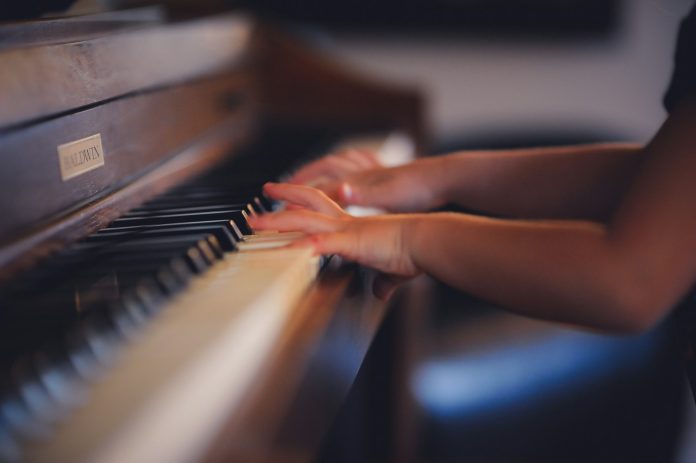Music is often thought of as an auditory art form, but its influence extends beyond sound. Many students find that music has a visual aspect, shaping the way they perceive and interact with the world. Whether it’s through album cover designs, concert visuals, or the imagery evoked by lyrics, music can be a deeply visual experience.
For students balancing school, assignments, and homework, understanding the connection between music and visuals can be beneficial. Some find that listening to music while studying enhances creativity and focus, while others experience synesthetic effects where sound translates into shapes and colors. This interaction between sound and vision can be particularly valuable in artistic fields and even in academic disciplines requiring deep concentration and imagination.
If you’re a student looking to deepen your appreciation for music and its impact on learning, this article will explore the visual aspects of music. Additionally, if you ever find yourself overwhelmed by school tasks, you can always turn to a do my assignment service to manage your workload efficiently.
The Connection Between Music and Visual Perception
How Music Evokes Imagery
Music has the power to create vivid mental images. When students listen to a piece of music, their minds often form pictures, landscapes, or abstract shapes that align with the melody and rhythm. This phenomenon can be particularly useful in creative fields such as writing, painting, and filmmaking.
Studies have shown that certain types of music, such as classical compositions or instrumental soundtracks, stimulate the brain’s visual cortex. This explains why students who engage in artistic studies often rely on music to inspire their work. Whether working on an assignment or exploring creative projects, music can enhance visual thinking and imagination.
Synesthesia: When Sound Becomes Color
Some students experience a phenomenon called synesthesia, where sounds automatically trigger visual experiences. This means that certain notes or instruments may be associated with specific colors, shapes, or movements.
For example, a person might see bursts of color when hearing a violin or feel a rhythmic pattern appear as geometric designs when listening to electronic music. While not everyone has synesthesia, many students report that music helps them visualize their ideas more clearly, making it a valuable tool for studying and completing assignments.
The Role of Music in Education and Learning
Music as a Study Aid
Many students use music as a tool for improving concentration and memory while studying. Different genres of music can influence learning in various ways:
- Classical Music: Known for boosting cognitive function and improving retention.
- Lo-fi Beats: Helps create a relaxed atmosphere for completing homework.
- Instrumental Jazz: Encourages deep focus without distracting lyrics.
- Nature Sounds & Ambient Music: Reduces stress and enhances learning efficiency.
Integrating music into a study routine can make assignments feel less overwhelming and more enjoyable. Some college students even create playlists tailored to different types of coursework, whether it be reading, writing, or problem-solving.
Music and Multisensory Learning
Music can play a crucial role in multisensory learning, where multiple senses work together to reinforce knowledge. For example, pairing music with visual study aids such as flashcards or mind maps can improve retention. This technique is especially beneficial for subjects requiring memorization, such as history, language studies, and science.
Additionally, students engaged in performing arts, film studies, or design projects often use music to enhance their creative expression. The fusion of audio and visuals in school projects can make learning more interactive and engaging.
Music in Visual Media and Entertainment
Music Videos and Album Art
For students interested in film, design, or animation, the intersection of music and visual arts is particularly fascinating. Music videos are a prime example of how sound and imagery come together to tell a compelling story.
From experimental visuals to choreographed performances, music videos can serve as inspiration for students working on creative assignments. Additionally, album covers and promotional artwork play a significant role in how audiences perceive music. The design of an album cover can evoke a mood that complements the music itself, making it an essential aspect of the music industry.
Concert Visuals and Live Performances
Attending a live concert or watching a performance online reveals another dimension of music’s visual impact. Many artists incorporate elaborate stage designs, lighting effects, and digital projections to enhance the audience’s experience. For students studying performance arts or event management, understanding these elements can provide valuable insights into the industry.
Incorporating visual effects in performances isn’t limited to large concerts. Many school events and college productions use similar techniques to engage audiences. Learning about music’s visual aspects can help students develop innovative ideas for their own creative projects and presentations.
Conclusion
Music is more than just a collection of sounds—it is a rich, multi-dimensional experience that stimulates both auditory and visual senses. For students, recognizing this connection can enhance creativity, improve study habits, and contribute to academic success. Whether using music to complete assignments, study for exams, or inspire artistic projects, its impact goes far beyond the notes.
By integrating music into learning and creative expression, students can unlock new ways to engage with their education and personal passions. So next time you put on your favorite playlist while studying, consider how the music shapes your perception—and how you can use it to your advantage.


